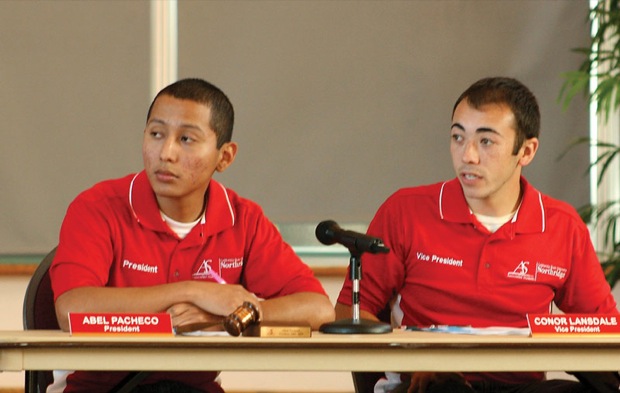
Associated Students (A.S.) Elections Director Dan Monteleone announced that spring elections would take place April 20 and 21 during yesterday’s A.S. Senate meeting.
After the success of an online voting system during fall 2009’s senate elections – the first online system to work after three previous attempts – the elections committee is looking forward to turning their energy toward marketing.
“There’s going to be more of everything,” Monteleone said, adding that “everything” refers to additional posters, advertisements, classroom visits and street team members to distribute election information.
The committee is currently working on coordinating dates with the University Student Union for events leading up to the election.
The fall senate elections saw a dip in marketing compared to previous semesters, however, Monteleone said the lack of advertising was intentional.
“I said it from day one, my number one priority was that the election worked,” he said. “The main priority was that it worked first, and then in spring we could work on bigger and better.”
With aims at making this spring’s election run as smooth as possible, the senate was set to vote on revisions to current elections code. However, A.S. vice president Conor Lansdale said the senate was unable to vote on revisions because, as outlined in the Gloria Romero Open Meetings Act, the item hadn’t been posted for public viewing 72 hours prior to the meeting.
But before ending discussion on the topic, Austin Ysais, Upper Division II senator, was poised to strike out a portion of the revised code that explained restricted areas for elections candidates to campaign.
The language Ysais wanted deleted from the code read, “(No-Campaigning Zone) will be marked-off, and will leave at least 2 feet for an access way for candidates to use (a polling station shall not block walkway access for candidates).”
“The reason I want to cross it out is because it’s a loophole,” Ysais said. “Someone can take advantage of it.”
Ysais mentioned that such loopholes in the code lead to incidents such as the controversy regarding appropriate distribution of election stickers during presidential elections that occurred during last spring’s presidential election.
In contrast, Lansdale brought to the attention of the senate that the 2-foot access way provided a means of mobility for potential disabled candidates.
Monteleone said in a phone interview that the sticker issue, which led to the elimination of all adhesive campaigning in future elections, wasn’t so much about candidates taking advantage of a loophole. Instead, the elimination of adhesive campaigning came down to the fact that the stickers were being left in various places on campus and weren’t easily removed.
The election code revisions will be moved to next week’s meeting as an action item.
As for Monteleone, he doesn’t foresee any major issues as he plans for spring elections.
“I really don’t see any problems. I do know that it is better to be more specific than less specific,” he said. “No matter what you put in the code, there will always be people who misread it.”




